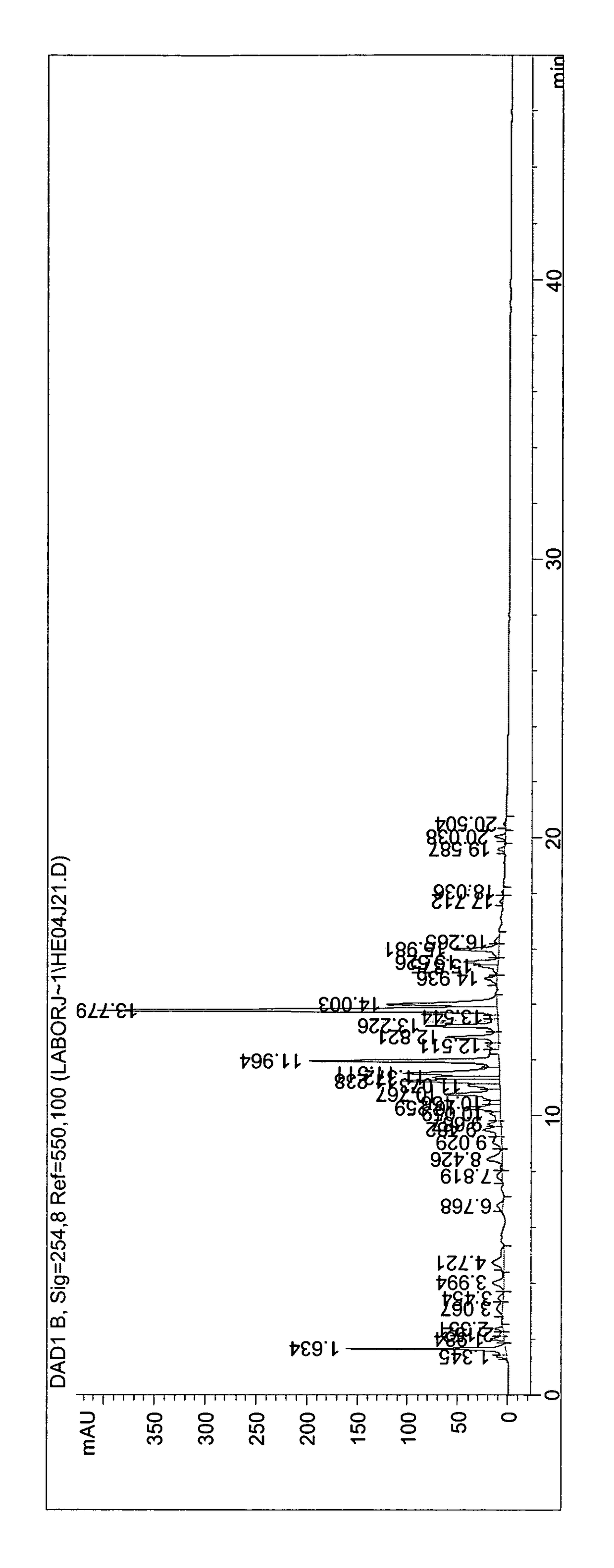Blackberry extract
a technology of blackberry and leaf extract, which is applied in the field of plant extracts, can solve the problems of loss of tissue, increased production cost, and increased production cost, and achieves the effects of preventing or slowing down damage to an extracellular matrix, and reducing the risk of tooth loss
- Summary
- Abstract
- Description
- Claims
- Application Information
AI Technical Summary
Benefits of technology
Problems solved by technology
Method used
Image
Examples
example 1
on of Blackberry Leaves Ethanol / Water 3:7 Extract
[0206]700 g of an ethanol / water 3:7 (m / m) mixture are added to 44 g of dried chopped blackberry leaves and the mixture is stirred for two hours with reflux at a temperature of 80-100° C. After cooling the extraction mixture to room temperature it is filtered through a pleated filter and the clear filtrate is evaporated to dryness under vacuum in a rotary evaporator. 12 g (yield 27.3%) of blackberry leaf extract are obtained.
[0207]Characterisation by HPLC fingerprint analysis: Column: YMC ODS-AQ, 5 μm, 150×3 mm with precolumn, temperature: 40° C., flow rate: 0.6 ml / min, acetonitrile / water with 0.1% formic acid gradient, injection volume: 5 μl, detection wavelength: 254 nm. FIG. 1 shows the HPLC diagram obtained.
example 2
tion of the Total Polyphenol Content
[0208]The total polyphenol content is determined photometrically, the content being calculated as catechin equivalents using a catechin calibration curve.
[0209]To prepare the EDTA solution, 2.15 g of Titriplex III and 29.0 g of sodium hydroxide are dissolved with distilled water in a 1 I measuring flask. A 0.5-1% solution of the extract to be determined is prepared in distilled water. For the calibration curve catechin solutions of various concentrations in the range from 0.02 to 0.10 mg / ml are prepared in distilled water. 7.5 ml of distilled water, 1.5 ml of the EDTA solution, 1 ml of catechin solution or 1 ml of extract solution and 0.5 ml of Folin-Denis reagent are mixed together and left to stand for 30 minutes at room temperature. In parallel, 1 ml of distilled water is prepared in the same way as a blank control. The absorption of the catechin and extract samples at 760 nm is then measured against the blank control.
[0210]A calibration curve ...
example 3
Assays
[0212]A 96-well microtitre plate (MMP Biotrak, Activity Assay System, Amersham Biosciences) coated with anti-MMP antibodies is incubated overnight (4° C.) with a pro-MMP solution standardised to 2 ng / ml (Amersham Biosciences). In parallel, a multistep pro-MMP standard series in the concentration range from 0.125 to 2 ng / ml is incubated to produce a regression line.
[0213]Removal of the solutions from the wells is followed by activation for 3 hours at 37° C. with p-aminophenyl mercuric acetate (APMA) [MMP-9: 1 mM; MMP-1: 0.025 mM]. Following removal of the APMA solution from the wells, incubation is performed with the extracts to be tested, prediluted in assay buffer, or with pure assay buffer as a control, at 37° C. for 15 minutes. After incubation and removal of the solutions from the wells, the enzyme / substrate solution provided in the assay kit is added in the final step and incubated for at least a further 4 hours at 37° C. The yellowish colour change of the reaction soluti...
PUM
 Login to View More
Login to View More Abstract
Description
Claims
Application Information
 Login to View More
Login to View More - R&D
- Intellectual Property
- Life Sciences
- Materials
- Tech Scout
- Unparalleled Data Quality
- Higher Quality Content
- 60% Fewer Hallucinations
Browse by: Latest US Patents, China's latest patents, Technical Efficacy Thesaurus, Application Domain, Technology Topic, Popular Technical Reports.
© 2025 PatSnap. All rights reserved.Legal|Privacy policy|Modern Slavery Act Transparency Statement|Sitemap|About US| Contact US: help@patsnap.com



